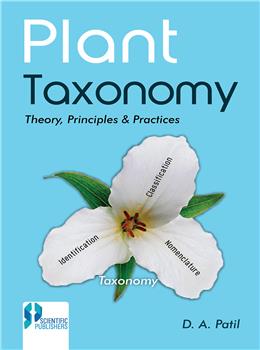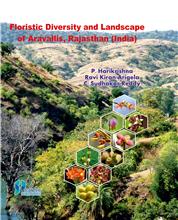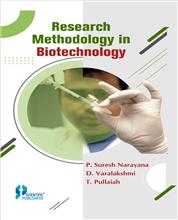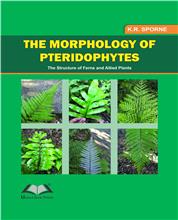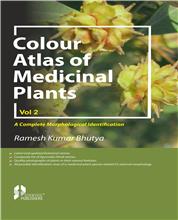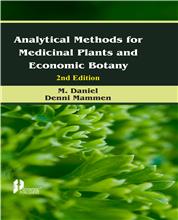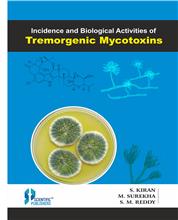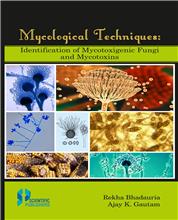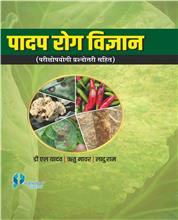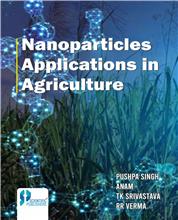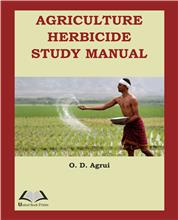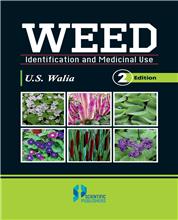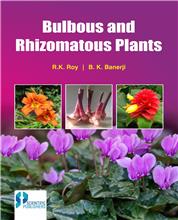1. INTRODUCTION TO TAXONOMY
(I) Taxonomy vis-à-vis Systematics:
(II) Functions of Taxonomy
(III) Principles of Taxonomy
(IV) Aims of Taxonomy
(V) Approaches To Taxonomy
(VI) Need and Importance of Taxonomy
2. CLASSIFICATIONS
(I) Need for Classification
(II) Process of Classification
(III) Classification and Aesthetics
(IV) Hierarchical Classifications
(V) General and Special Purpose Classifications
(VI) Horizontal and Vertical Classifications
(VII) Polythetic and Monothetic Classifications
(VIII) Folk Classifications
(IX) Phases of Classification
(X) Splitting and Lumping of Taxa
3. TAXONOMIC STRUCTURE
(I) Taxonomic Categories
(II) Major Categories
(III) Minor Categories
(IV) Historical Development of Concept of Species
(V) Concepts of Species
(VI) Infraspecific Categories
(VII) Deme Terminology
4. SYSTEMS OF CLASSIFICATION: GENESIS AND DEVELOPMENT
(I) Pre-Darwinian Systems of Classification
(II) Post-Darwinian Systems of Classification
5. SOURCES OF TAXONOMIC INFORMATION
(I) Exomorphology
(II) Anatomy
(III) Micromorphology and Ultrastructure
(IV) Embryology
(V) Palynology
(VI) Cytology
(VII) Chemistry
(VIII) Reproductive Biology
(IX) Genetics and Cytogenetics
(X) Plant Geography
(XI) Plant Ecology
(XII) Palaeobotany
6. Numerical Taxonomy
Principles
Operational Steps
Applications
Advantages
Demerits
7. Molecular Taxonomy (Systematics)
Molecular Approaches
Molecular Methods
Sequencing of DNA
DNA Bar Coding
Some Applications
Phylogenetics and Phylogenomics
Species Concepts
References
8. CHARACTERS
(I) Definitions of Character
(II) Kinds of Character
(III) Character Weighting
(IV) Presnence or Absence of Characters
9. FLORISTICS
10. TAXONOMIC LITERATURE
(I) Floras and Manuals
(II) Monographs and Revisions
(III) Flora vs. Monographs
(IV) General Taxonomic Indexes
(V) Bibliographies, Catalogues and Review Serials
(VI) Perodicals
(VII) Glossaries and Dictionaries
(VIII) Cultivated and Economic plants
11. KEYS
(I) Key
(II) Synopsis
(III) Kinds of Keys
12. PLANT NOMENCLATURE
(I) Introduction
(II) Common Names
(III) Scientific Names
(IV) Binomial Nomenclature
(V) Early Attempts For Organised Nomenclature
(VI) International Code of Nomenclature (ICN)
(VII) Codes of Nomenclature
(VIII) Preamble of ICN
(IX) Principles of ICN
(X) Rule of Priority
(XI) Limitations of Priority
(XII) Typification
(XIII) Working of Type Method
(XIV) Kinds of Nomenclatural Types
(XV) Effective and Valid Publication
(XVI) Type Concept and Population Concept
(XVII) Rejection of Names
(XVIII) Retention and Choice of Name
(XIX) Change of Names
(XX) Conservation of Names
(XXI) New Names
(XXII) Legitimate Names
(XXIII) Names of Cultivated Plants
(XXIV) Names of Hybrids
(XXV) Author Citation
(XXVI) Phylocode
13. HERBARIUM
(I) Development of Herbarium
(II) What is Herbarium
(III) Kinds of Herbaria
(IV) Functions of Herbarium
(V) Type Specimens : Importance and Care
14. BOTANIC GARDENS, MUSEUM AND LIBRARY
(A) Botanic Gardens
(I) What are Botanic Gardens
(II) Botanic Gardens:Historical Development
(III) Functions of Botanic Gardens
(IV) Botanic Gardens and Their Sections
(V) The Experimental Garden
(VI) Important Gardens of the World
(VII) Economic, Cultural And Historic Events In Botanic Gardens
(VIII) Historic Buildings And Architectural Features In Botanic Gardens
(IX) Documented Preserved Collections In Botanic Gardens
(X) Major Botanical And Horticultural Libraries In Botanic Gardens
(XI) Museum Collections In Botanic Gardens
(XII) Few Characteristic Botanic Gardens
(B) Botanical Museum
(I) What is Botanical Museum
(II) Functions and Importance
(III) Important Museums of The World
(C) Botanical Library
(I) What is a Botanical Library
(II) Functions of the Botanical Library:
(III) Important Botanical Libraries of The World
BIBLIOGRAPHY 283–326
Index-I: Latin Plant Names
Index-II: Taxonomic Terms
Index-III: Botanic Term
